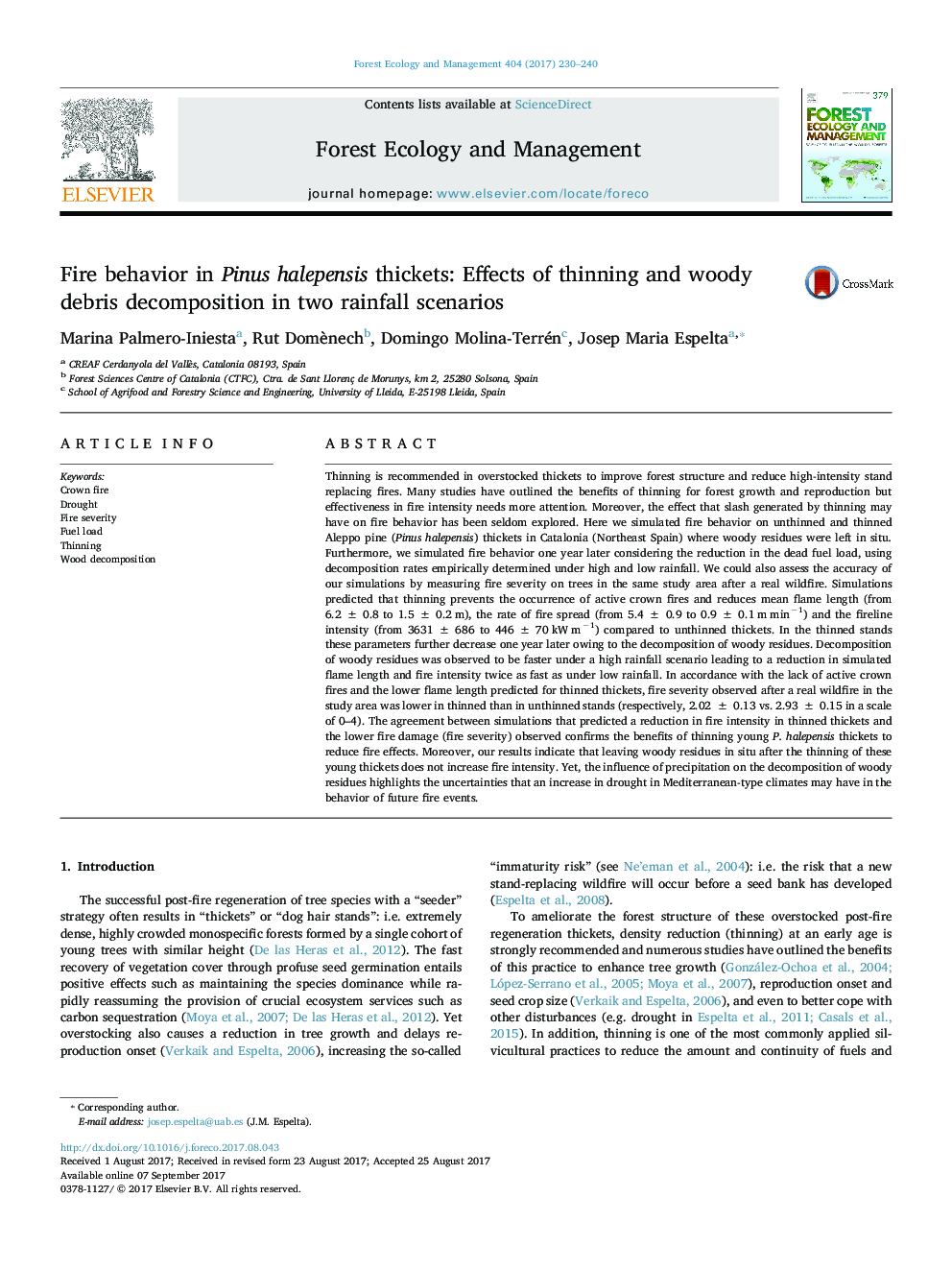| کد مقاله | کد نشریه | سال انتشار | مقاله انگلیسی | نسخه تمام متن |
|---|---|---|---|---|
| 6459164 | 1421354 | 2017 | 11 صفحه PDF | دانلود رایگان |

- Thinning reduces flame length, fire spread and intensity in young pine thickets.
- Fire intensity in thinned areas further declines with time due to slash decay.
- Ultimately, reduction in fire intensity results in lower fire severity in pines.
Thinning is recommended in overstocked thickets to improve forest structure and reduce high-intensity stand replacing fires. Many studies have outlined the benefits of thinning for forest growth and reproduction but effectiveness in fire intensity needs more attention. Moreover, the effect that slash generated by thinning may have on fire behavior has been seldom explored. Here we simulated fire behavior on unthinned and thinned Aleppo pine (Pinus halepensis) thickets in Catalonia (Northeast Spain) where woody residues were left in situ. Furthermore, we simulated fire behavior one year later considering the reduction in the dead fuel load, using decomposition rates empirically determined under high and low rainfall. We could also assess the accuracy of our simulations by measuring fire severity on trees in the same study area after a real wildfire. Simulations predicted that thinning prevents the occurrence of active crown fires and reduces mean flame length (from 6.2 ± 0.8 to 1.5 ± 0.2 m), the rate of fire spread (from 5.4 ± 0.9 to 0.9 ± 0.1 m minâ1) and the fireline intensity (from 3631 ± 686 to 446 ± 70 kW mâ1) compared to unthinned thickets. In the thinned stands these parameters further decrease one year later owing to the decomposition of woody residues. Decomposition of woody residues was observed to be faster under a high rainfall scenario leading to a reduction in simulated flame length and fire intensity twice as fast as under low rainfall. In accordance with the lack of active crown fires and the lower flame length predicted for thinned thickets, fire severity observed after a real wildfire in the study area was lower in thinned than in unthinned stands (respectively, 2.02 ± 0.13 vs. 2.93 ± 0.15 in a scale of 0-4). The agreement between simulations that predicted a reduction in fire intensity in thinned thickets and the lower fire damage (fire severity) observed confirms the benefits of thinning young P. halepensis thickets to reduce fire effects. Moreover, our results indicate that leaving woody residues in situ after the thinning of these young thickets does not increase fire intensity. Yet, the influence of precipitation on the decomposition of woody residues highlights the uncertainties that an increase in drought in Mediterranean-type climates may have in the behavior of future fire events.
Journal: Forest Ecology and Management - Volume 404, 15 November 2017, Pages 230-240